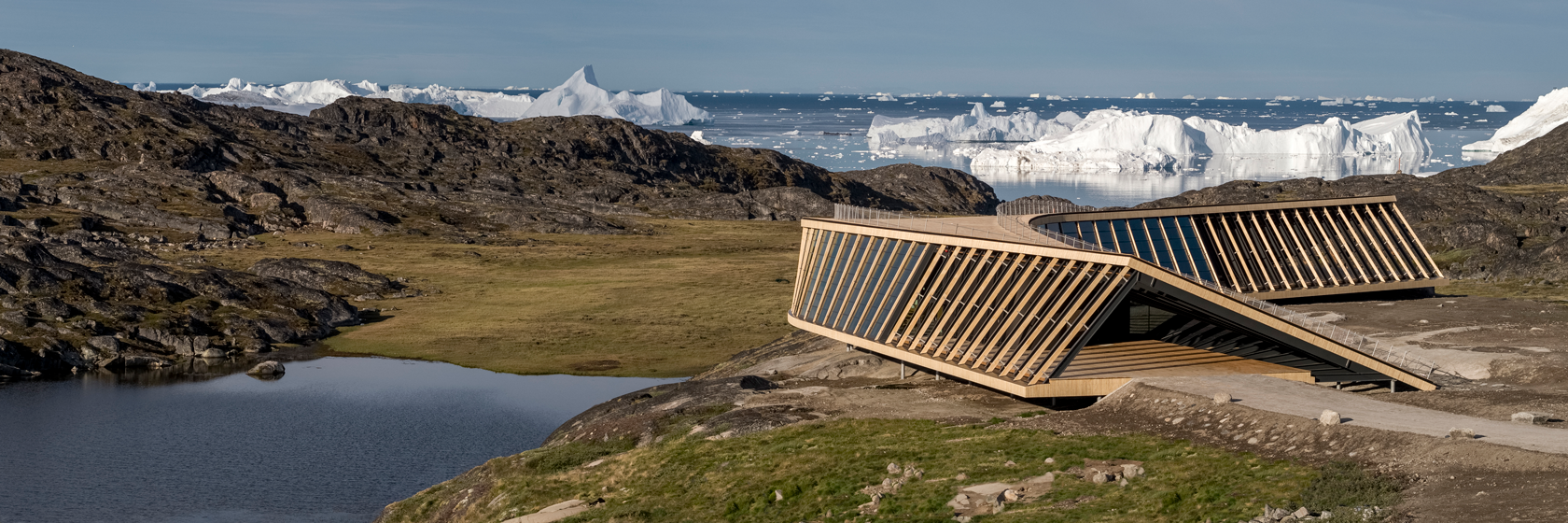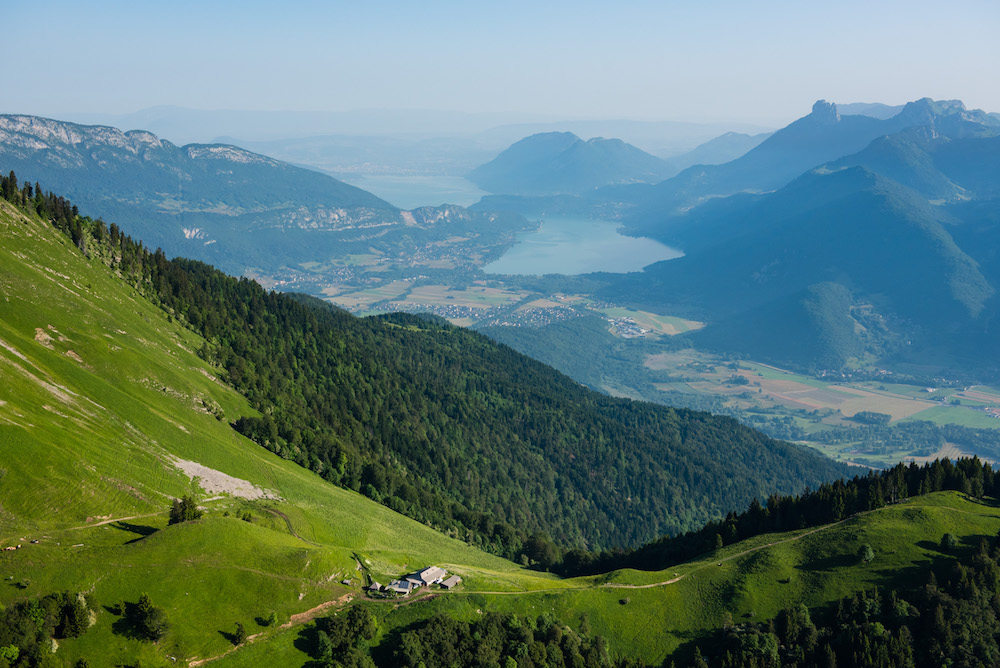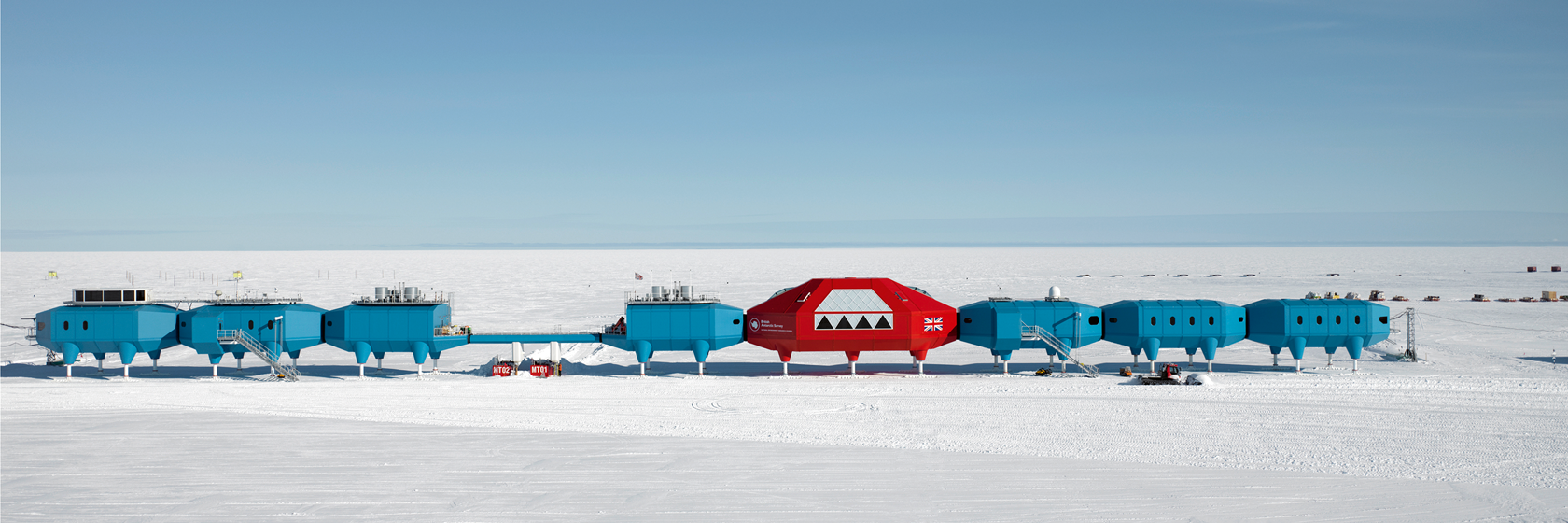
Halley VI, a station in Antarctica
In AA 446 issue, entitled Architecture Goes Wild (available on our online shop), AA looks at architecture in ‘extreme’ environments—which have always been, or will become, hostile ones. Antarctica is one of these environments, but this does not frighten the human being who have been setting up there scientific bases since the 20th century. British architect Hugh Broughton is one of the few architects to have built on the White Continent.
With his practice founded in London in 1995, Hugh Broughton has made a name for himself in this particular field of construction, with the completion in 2013 of a British research station, Halley VI, which has become a reference for what is possible to build in Antarctica. Below is an extract from the book Antarctic Resolution (edited by Giulia Foscari, Lars Müller Publishers, 2021) in which the architect recalls the genesis and outcome of the project.
Halley is the most southerly science research station operated by the British Antarctic Survey (BAS) and is located on the 150-metre-thick floating Brunt Ice Shelf, which each year moves 400 metres towards the sea. Snow levels rise by 1 metre every year, and the sun does not rise for 105 days during winter. Temperatures drop to -56°C and winds blow in excess of 160 kph. Access by ship and plane is limited to a three-month summer window. A research station has been occupied continuously at Halley since 1957 and in 1985 scientists working there first observed the hole in the ozone layer. Halley V p. 762 was completed in 1992. Continuing occupation however seemed dangerous, as the station site had shifted so far from the mainland that it was at risk of calving as an iceberg. The station’s legs were fixed in the ice and therefore it could not be moved, thus in 2004 BAS organised an international competition to select designers for a new station. The winning entry proposed a line of elevated ski-based modules. Bedrooms, laboratories, office areas, and energy centres are housed in aerodynamic blue modules. A larger, two-storey, light-filled red module provides the social heart of the station and is used for living, dining, and recreation. Linked together, the modules create a self-supporting, infrastructure-free community.
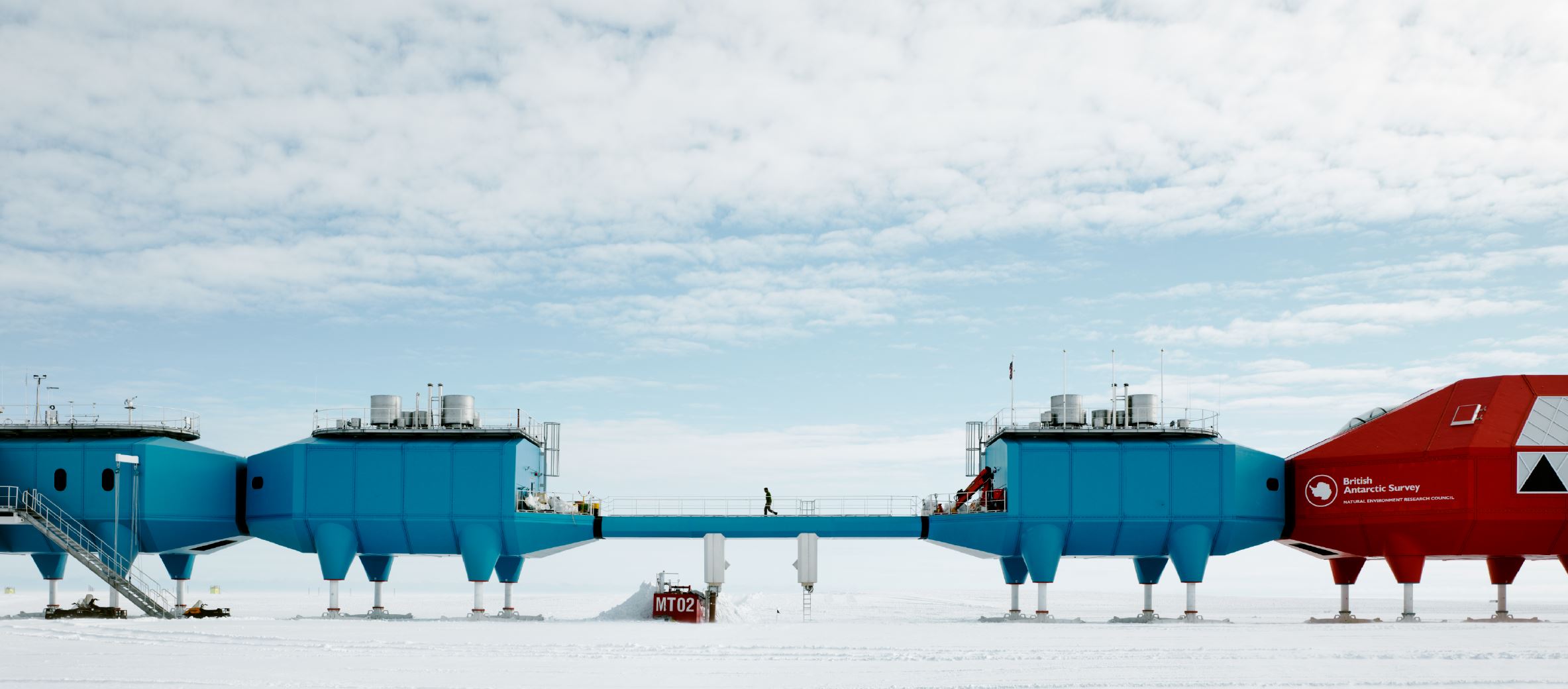
The station is arranged in a straight line perpendicular to the prevailing wind, so that snow drifts form only on the leeward side. This leaves the windward side free from drifts and creates a hard, icy surface across which vehicles can move. The base is split in two for life safety. Each half has its own energy centre and is self-sustaining in case of emergency. A bridge link allows the sharing of power, drainage and water. The modules are supported on giant steel skis and hydraulically driven legs that allow the station to mechanically “climb” up out of the snow every year. And, as the ice shelf moves out towards the ocean, the modules can be disconnected, lowered and towed further inland by bulldozers, as was done successfully for the first time in 2016. The completion of Halley VI p. 810 in 2013 marked a milestone in the development of a new architecture for Antarctica.
On the one hand the station is an imaginatively pragmatic engineering-led response to a set of unusual criteria, in particular the need for relocation, which largely determined the modular, ski based solution. On the other hand, it presents an architectural vision of a future of mobile research buildings which can quickly appear and then disappear leaving little trace of their presence once they have gone and therefore impacting as little as possible upon their environment.
Alongside the engineering achievement, the fleet-of-foot modules of Halley VI demonstrate a robust architectural response to the extreme environment which manifests itself in the rigorous aerodynamic design, economic building form and resolved expression of parts making a whole. For example, the metal stairs, roof decks, and external balconies are all carefully considered boltons which magnify the machine aesthetic of the station; the bold colours aid way-finding in poor weather and also provide a nationalist expression – a red, white, and blue marker in the midst of the cold, white landscape of Antarctica; and there is significant reference to other industrial sectors with the rounded windows and flexible silicone connectors between the modules both clearly reminiscent of high speed trains. In these many ways the external appearance is the epitome of British high-tech with its roots in the work of Archigram of the 1960s – there is little doubt that Halley VI is the physical embodiment of the Walking City.

The modules have a steel structure and are clad in highly insulated, airtight composite glass-fibre panels. The prefabrication of structure, cladding, rooms, and services was maximised. Products were procured from around the world. The strategy was to select items which were tried and tested and then to use them in innovative ways. So, for example, the flexible silicone bellows which allow movement between modules whilst preserving weather tightness are adapted from the insulated connectors used in trains in Nordic countries; the skis which support the modules are giant versions of those used on standard sledges; and the translucent glazing to the big window in the red module is insulated with nanogel, which was first invented by NASA to insulate the nose cone of the space shuttle on re-entry to the Earth’s atmosphere. The centre of pre-construction activities was in South Africa, where a full-scale trial erection of modules was undertaken prior to shipping to Antarctica by ice-strengthened cargo ship. The modules were erected on-site over four twelve-week summer seasons using a factory line approach.
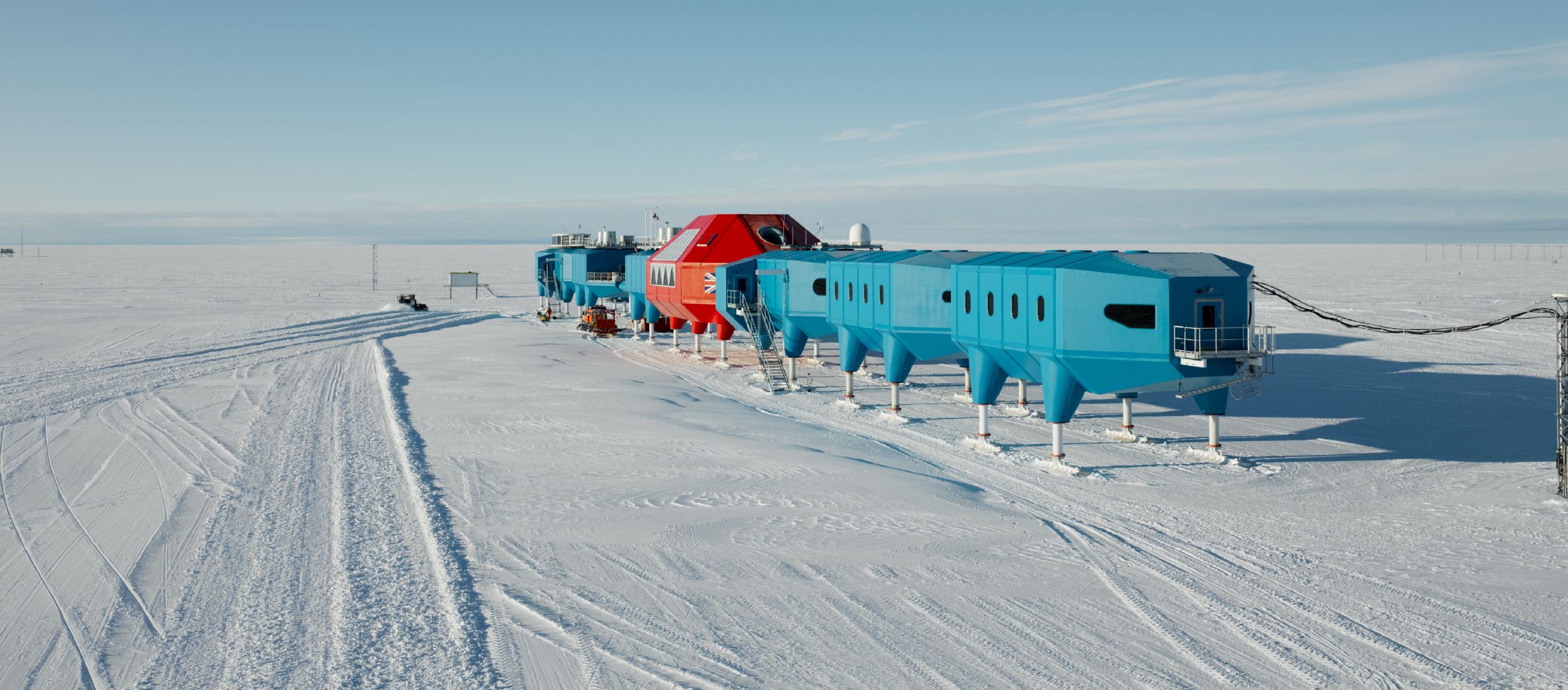
To determine the optimum interior design, the architects talked extensively with people who had lived and worked at Halley to understand the rituals of an average day and uncover the psychological deprivations of Antarctic isolation. They then considered the architectural tools which could enhance the living experience and provide support through the long dark winters. This was done through the application of first principles to the design – considering people’s response to light, space, volume, colour, and even smell. Where the exterior de sign finds its roots in British high-tech, the interior finds its inspiration in a more classical architectural language characterised by symmetry, enfilade layouts, strong axial views, and a restrained material palette. The rooflights which illuminate the main circulation are a feature of the architects’ work. They provide unen cumbered views of the sky free from physical context, whether in Antarctica or the middle of London. Within the central red module this approach reaches a high point with the top-lit veneer-lined spiral stair drum overlooking the double-height atrium with its dramatic inclined insulated glazing. This space fosters integration between people within a high-quality living environment which would be equally at home in a cultural or educational organisation in a more temperate setting.
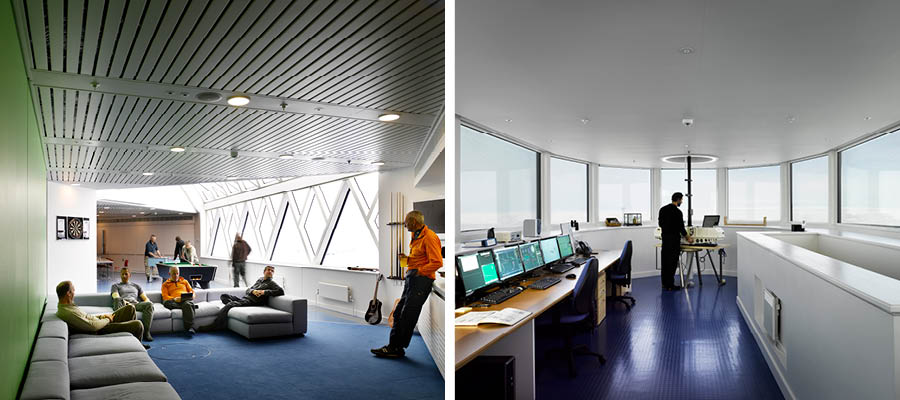
The design of Halley VI works with its context to create a strong sense of place to support its crew within a cocoon developed around their needs. It provides a benchmark for the sustainability of future stations achieved through a highly insulated envelope, recycled heating, anaerobic sewage treatment, and low-water-use strategies. Simultaneously futuristic and classical in its design, it provides a sophisticated model for ergonomic living within an extreme environment, mediating successfully between its role as national symbol and home-from-home for the residents. Halley VI harnesses and then expresses its technology in moves redolent of a set in a sci-fi movie to minimise its environmental impacts. The “kit-of-parts” approach helps to support an altogether quieter interior of carefully manipulated daylight playing softly on combinations of timber finishes and brighter colours to counteract sensory deprivation and support the crew through the loneliness of a polar existence. It is this combination which creates the architectural response, and which has shown the way to a future for Antarctic design which places the occupants at centre stage within containers that are immediately at home within their context.
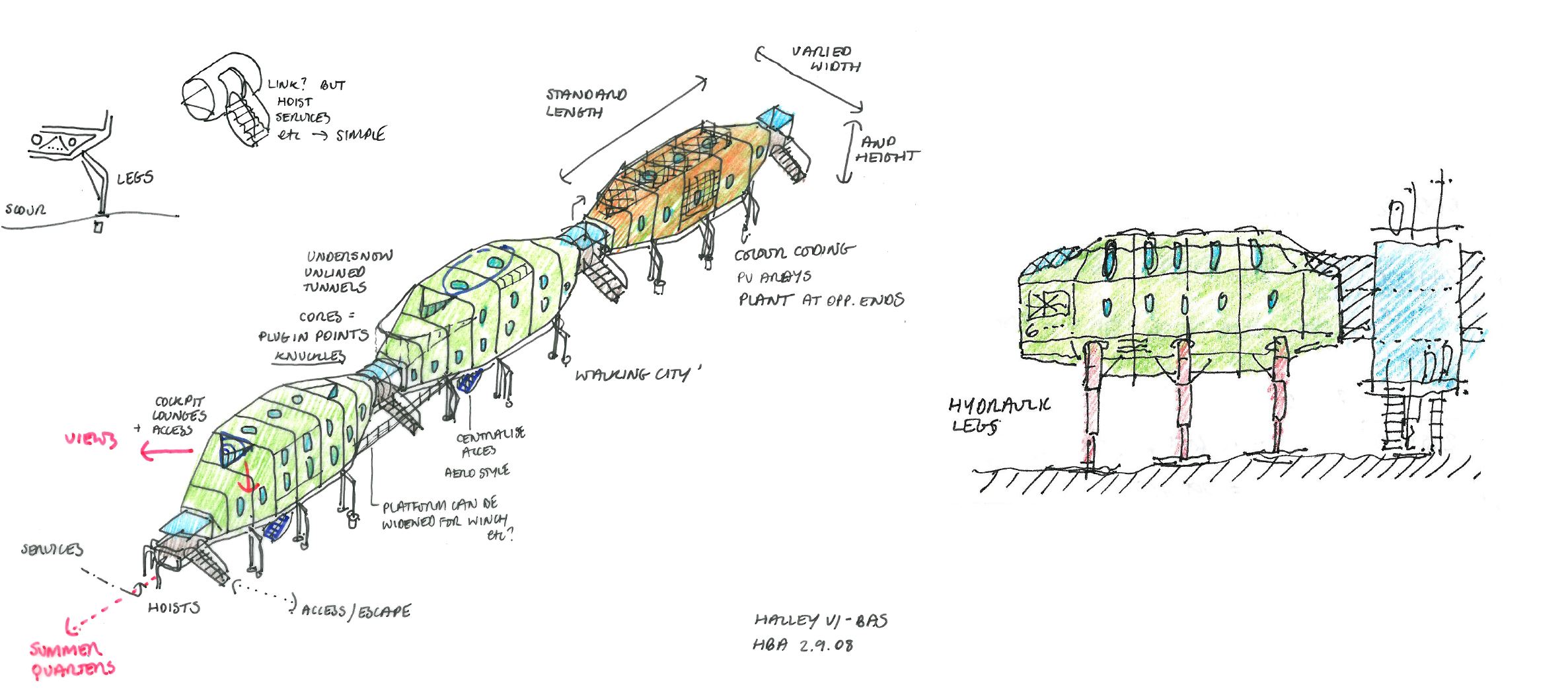
Must-read
Antarctic Resolution
Giulia Foscari Widmann Rezzonico, Unless
Lars Müller Publishers, Zurich, 2021
992 pages – €65

